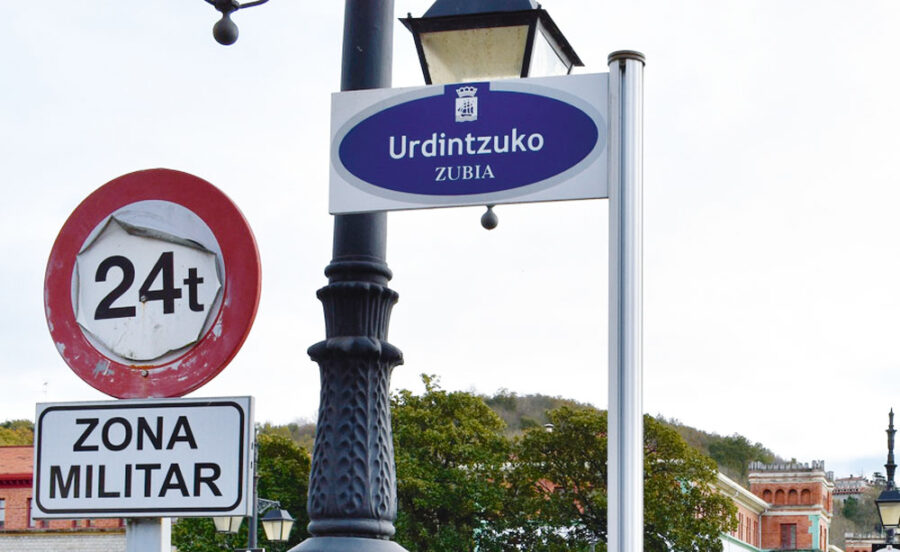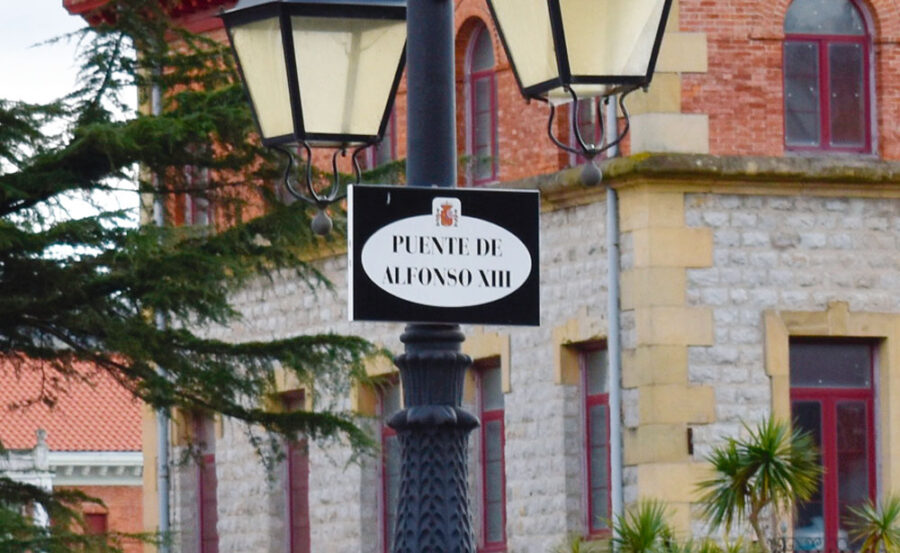
In order to avoid flooding in the neighborhoods of the Urumea valley, in recent years several bridges that were architectural barriers to the river, such as Astiñena and Espartxo, have been demolished and rebuilt. However, because of its large columns there is still a bridge that makes the river difficult: the Urdintzu bridge that connects the barracks with the Loiola district.
With the signing of the sale of Cuartel, the area will go to the City Hall of San Sebastian, and when the military attend it within four years, a new neighborhood with 1,700 homes will be built. In addition to the construction of the houses, other interventions will be carried out such as the demolition of the Urdintzu bridge, witness of historical events.

Standing since 1926
The Urdintzu Bridge was inaugurated in 1926 with headquarters. During the opening ceremony, among other authorities, were the king of Spain Alfonso XIII, his mother María Cristina and the Spanish dictator Primo de Rivera.
In fact, the military baptized the bridge with the name of Alfonso XIII.aren, probably because he opened the military facilities. On the contrary, the area’s neighbours have called it the Urdintzu Bridge, where there was a house with that name.
Therefore, in 1998, the City Hall introduced this name into its official street. On the contrary, in 2015 there was a conflict in this respect, as the military installed plates that said Puente de Alfonso XIII in the center of the bridge with the shield of Spain. Citizenship began to move and the city council removed the plates and placed the officer. But the military picked up the plates with the name of the grandfather of the king emeritus of Spain, Juan Carlos I, and they are still there.

36 War
The most important event experienced by the bridge was the War of 36, where the surrender of the military coup d ' état and, therefore, the triumph of the Donostian people was agreed.
In fact, although the Franco uprising began on July 18, 1936, the troops of the Loiola barracks did not leave until 22 to take the city. On leaving, however, they found the resistance of many citizens, socialists, communists, nationalists and, above all, anarchists. There were tough fighting in many parts of the city, which, despite having much less resources and training than the highways, forced the military to go back to the barracks.

The barracks were besieged by Ametzagaina, the Polloe area, Txomiñen and elsewhere, until the military had no choice but to meet with the Authority Board. Thus, the nationalists Manuel Irujo, Rafael Pikabea, José María Lasarte and Juan Antonio Irazusta and the socialist Miguel Amilibia met on the bridge with the military authorities José Vallespin, León Carrasco and Enrique Erce to agree on the surrender of the Loiola barracks.
Vallespín did not intend to give in, but the highways were left with no other choice, and they surrendered on 28 July, although Vallespin had already fled. Thus, the militiamen entered the barracks and were able to acquire good weapons that were later used to combat fascism on the front.
The Donostian warrior Mario Salegi was one of those who participated in the Site and narrated how his surrender lived in Summer 36. Memoirs of a gudari (Txalaparta, 2005): “All of a sudden, the screams stirred the earth. ‘Give up! They give up!’ A great stir emerged that came out of hundreds of gorges. We stood for a moment, amidst a hum of joy, without believing what we heard.”
The war advanced and finally, around September 15, Francoist troops took over the city. But we must not forget that the Donostian people, without large military formations and with few resources, managed to stop fascism for two months, and the Urdintzu bridge is a symbol of this. Therefore, as advocated by the Dinamita Tour project, although it is necessary to demolish the bridge, does space not deserve any memory that recognizes, remembers and explains what happened?
Kirola eta oroimena uztartuko dituzte, bigarrenez, mendi-martxa baten bitartez. Ez da lehiakorra izanen, helburua beste bat delako. La Fuga izeneko mendi martxak 1938ko sarraskia gogorarazi nahi du. Ezkabako gotorlekuan hasi eta Urepelen amaituko da. Maiatzaren 17an eginen dute.
Fusilamenduak, elektrodoak eta poltsa, hobi komunak, kolpismoa, jazarpena, drogak, Galindo, umiliazioak, gerra zikina, Intxaurrondo, narkotrafikoa, estoldak, hizkuntza inposaketa, Altsasu, inpunitatea… Guardia Zibilaren lorratza iluna da Euskal Herrian, baita Espainiako... [+]
Gogora Institutuak 1936ko Gerrako biktimen inguruan egindako txostenean "erreketeak, falangistak, Kondor Legioko hegazkinlari alemaniar naziak eta faxista italiarrak" ageri direla salatu du Intxorta 1937 elkarteak, eta izen horiek kentzeko eskatu du. Maria Jesus San Jose... [+]
Familiak eskatu bezala, aurten Angel oroitzeko ekitaldia lore-eskaintza txiki bat izan da, Martin Azpilikueta kalean oroitarazten duen plakaren ondoan. 21 urte geroago, Angel jada biktima-estatus ofizialarekin gogoratzen dute.
Bilbo Hari Gorria dinamikarekin ekarriko ditu gurera azken 150 urteetako Bilboko efemerideak Etxebarrieta Memoria Elkarteak. Iker Egiraun kideak xehetasunak eskaini dizkigu.
33/2013 Foru Legeari Xedapen gehigarri bat gehitu zaio datozen aldaketak gauzatu ahal izateko, eta horren bidez ahalbidetzen da “erregimen frankistaren garaipenaren gorespenezkoak gertatzen diren zati sinbolikoak erretiratzea eta kupularen barnealdeko margolanak... [+]
1976ko martxoaren 3an, Gasteizen, Poliziak ehunka tiro egin zituen asanbladan bildutako jendetzaren aurka, zabalduz eta erradikalizatuz zihoan greba mugimendua odoletan ito nahian. Bost langile hil zituzten, baina “egun hartan hildakoak gehiago ez izatea ia miraria... [+]
Memoria eta Bizikidetzako, Kanpo Ekintzako eta Euskarako Departamentuko Memoriaren Nafarroako Institutuak "Maistrak eta maisu errepresaliatuak Nafarroan (1936-1976)" hezkuntza-webgunea aurkeztu du.